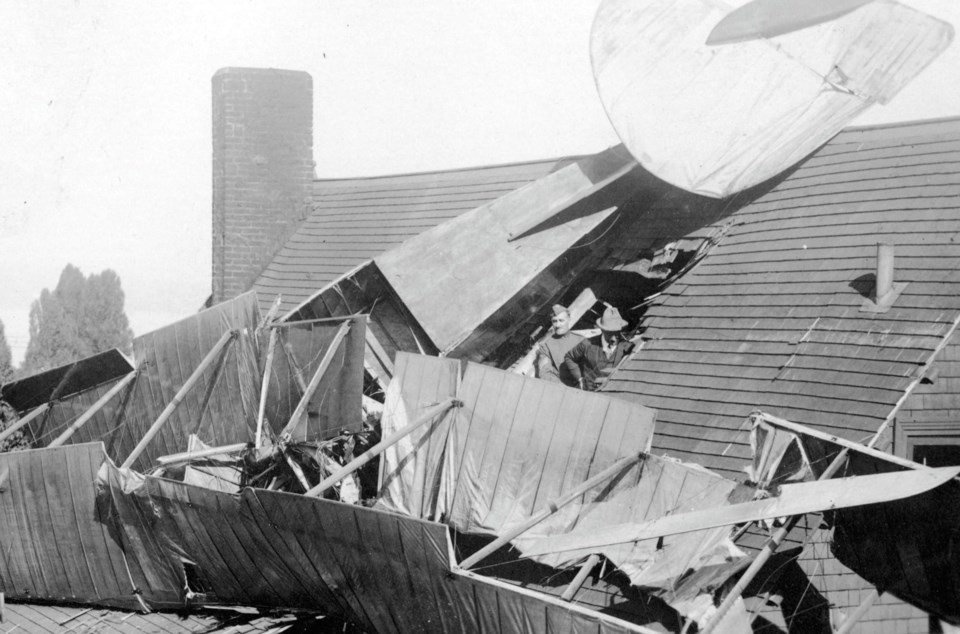The West End is one of Vancouver's oldest neighbourhoods.
As the city grew around Gastown and Strathcona, land in the West End was bought. At first, it was seen as a potential resource; coal had been found in Coal Harbour, but it didn't turn out to be a feasible enterprise.
Later, it became the neighbourhood of the city's elite, until Shaughnessy was founded. Over time, many of the houses of the wealthy were knocked down and apartments built, though some houses survive today, like Roedde House.
While it's often a quiet place these days, the West End has plenty of stories.
1. It was the site of Vancouver's first plane crash
In 1918 a house on Bute Street was the site of an unusual first.
Vancouver's (and probably B.C.'s) first real plane crash.
It happened in September when Lt. Victor Bishop, an experienced pilot, was flying a flying boat as a test.
In short, the test ended poorly as the engine conked out over the West End.
Instead of making it to Coal Harbour, it crashed into a doctor's house on Bute Street. It went right into an upstairs bathroom.
Not only were there no injuries, but Bishop reportedly got out of the plane and walked downstairs and out the front door.
2. A wolf was killed at Burnaby and Cardero
Canada is a country filled with wildlife, even today, but it may be strange to imagine a large wolf wandering the streets of the West End.
However, in 1903, the Vancouver Province reported on an incident.
The wolf, apparently old and gaunt, had been attracted to a chicken coop in the backyard of a house on Burnaby Street near Cardero.
The resident of the house, whose bedroom looked out over the backyard, heard the commotion, got his shotgun, fired a blank, spotted an animal in the dark, fired a live round, and, after the chickens calmed down, went to bed.
The next morning he found the dead wolf (and some dead chickens) in his backyard.
3. Arthur Erickson's plan
Famed architect Arthur Erickson had a lot of plans that didn't come to fruition.
One of those was dubbed Project 56.
"Instead of all the apartment towers that are there now, the structures would have been terraced from the shore to buildings a hundred storeys high, with nothing in its centre and a view of the bay," reads a quote from Erickson from the Canadian Architectural Archives.
The massive project was essentially all one building that would have dwarfed anything else in the city, even now (the tallest building in Vancouver is the 62-storey Shangri-La).
4. St Paul's Hospital was founded on the outskirts of town
Downtown Vancouver's St Paul's Hospital has been an essential piece of Vancouver for more than a century.
It was founded in 1894 by five nuns from the Sisters of Providence in Montreal. When they arrived, they found the piece of land the hospital is currently on.
And they bought it for $9,000.
At the time it was way outside the city's core in the wilderness, surrounded by the charred remains of the forest that burned down in the fire of 1886.
5. The English Bay piers
Piers were popular at the turn of the 20th century, and Vancouver's West End had a couple built over the next couple of decades.
The first one, built in 1907, stretched out from the beach to a glassed-in structure where bands would play on summer nights. Like the White Rock Pier, a popular activity was just walking out to the end.
Unfortunately, it was torn down after three decades.
The second grew over time. At first, there was the Winter Garden dance hall, built in 1923. A pier was added, extending 337 feet out into the ocean.
However, by the 1950s, it was taken down as well.



